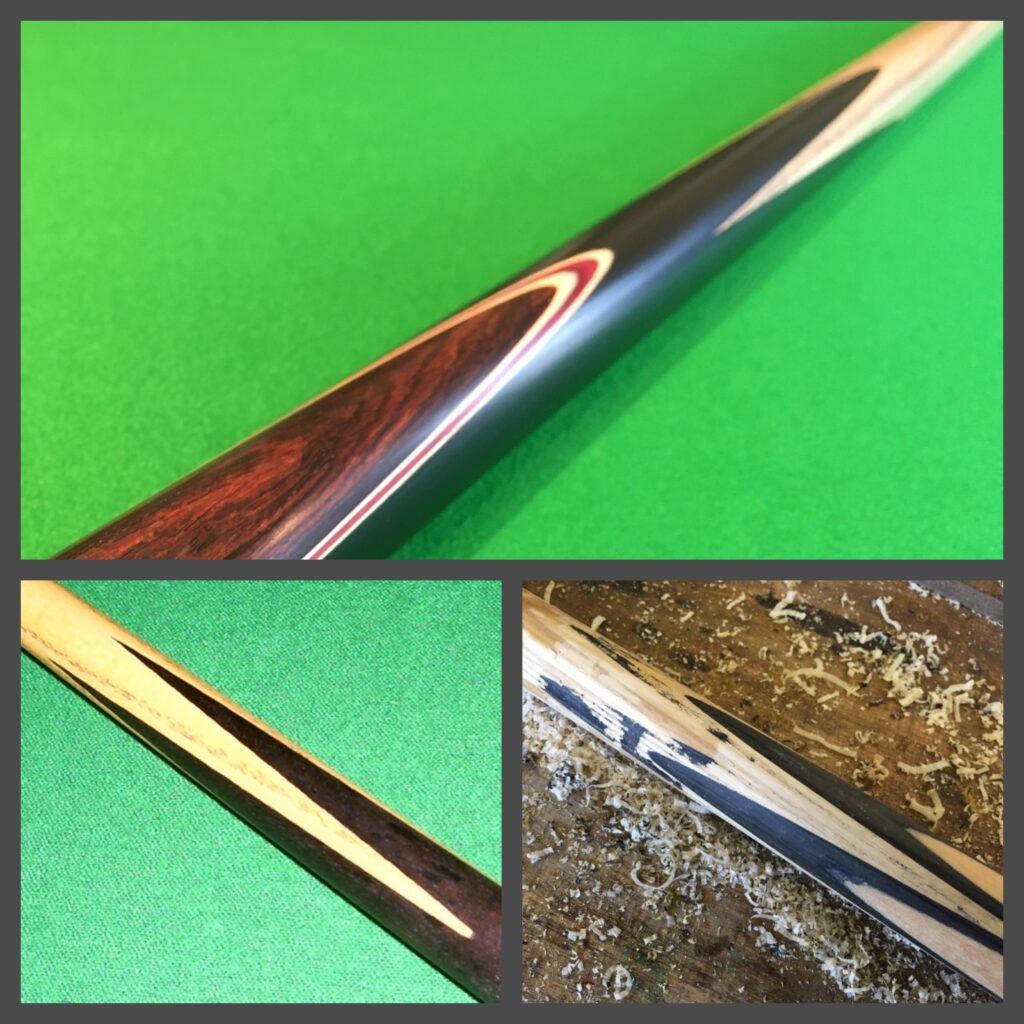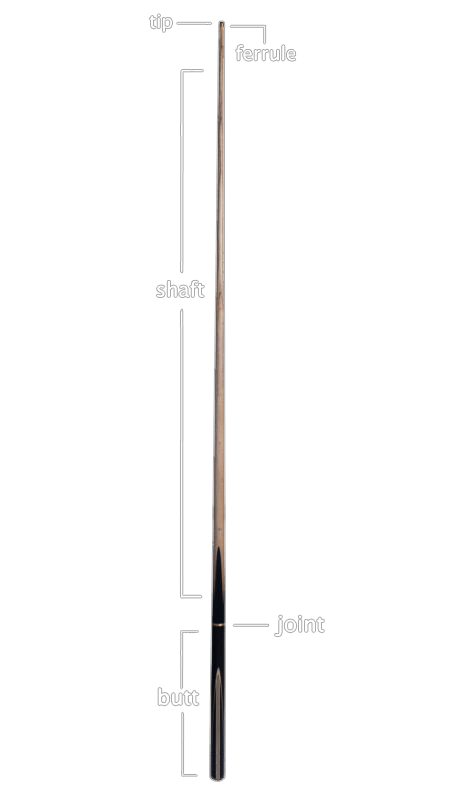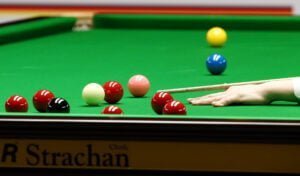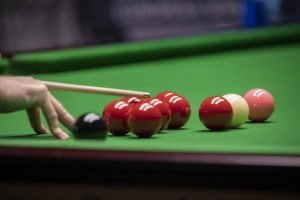Snooker is a popular cue sport that requires precision and skill. One of the most important tools for playing this game is the snooker cue.
A snooker cue is a long, thin, tapered stick used to hit the balls on the table. In this article, we will explore the anatomy of a snooker cue and the different parts that make up this important equipment.
Importance Of Snooker Cue
Learning the anatomy of a snooker cue is essential for players of all skill levels. Understanding your cue is an important first step when learning snooker as it can be beneficial when practicing, playing or even watching snooker.
For a beginner, a cue may appear to be nothing more than a mere stick, but in reality, there are numerous vital elements that collectively contribute to the performance of each individual cue.
The snooker cue directly affects accuracy, control, comfort, and confidence on the table.
- A good quality snooker cue can help you make precise shots with ease, while a poorly constructed cheap cue can hinder your performance.
- The choice of cue can also impact your confidence, as a cue that feels comfortable and natural to you can give you the mental edge that need to succeed.
- Proper maintenance of a snooker cue is crucial to ensure its longevity and continued optimal performance.
Overall, investing in a good snooker cue is necessary for players of all skill levels to improve their game and achieve their full potential on the table.
History Of Snooker Cue
Ever wondered how the cue stick got its name?
In the 15th century, several outdoor ball and stick games such as golf and croquet evolved into indoor games i.e. billiards (snooker’s predecessor).
Players used an item called a mace, which resembled a golf club with a long cylindrical body and a flat, wide foot. The mace was primarily used to push balls around on the table instead of striking them.
However, players encountered difficulties when the balls were against the rail cushions. To overcome this, they improvised and began using the tail-end of the mace to strike the ball.
This is where the name “cue” originated from, derived from the French word “queue” meaning tail-end.
By 1800, only skilled players were using the cue, as novice players were required to use the mace to prevent unintentional damage to the cloth.
Benefits Of Having Your Own Snooker Cue
Using a communal cue is common when starting to play snooker, but as your game improves and you become more competitive, investing in your own cue holds many benefits.
Communal cues get worn out quickly, are often not well-maintained, may not be of high quality, and may not feel comfortable to use.
Having your own cue provides many advantages, and for many players, it is an essential part of their game.
Owning your own personal snooker cue offers various benefits:
- You can choose a cue that is comfortable for you to hold and play with, which can significantly impact your performance. The weight and size of the cue can greatly impact how comfortable it feels to hold and play with.
- You can choose and customize the appearance of your cue, including the type of wood and design, to your preference.
- You can take proper care of it, leading to better performance and longevity. In contrast, communal cues are often not well-maintained, get worn quickly, and can impact performance.
⚠️ It takes two to three weeks of constant playing to get your body used to a new cue.
Types Of Snooker Cues
There are different types of snooker cues differentiated by wood, joint, splicing, weight and tip.
Woods
Most snooker cue shafts are made from ash wood. However, shafts can also be made of maple wood. The butt is usually made of hardwood such as rosewood or ebony.
Some cue butts may also feature decorative inlays made of materials such as exotic wood, precious metals and stones. A good cue doesn’t have to be expensive though.
Ash vs Maple Snooker Cue?
- Look – Ash has a pale, creamy color with visible grain patterns, while maple is usually a lighter, more uniform color with a very fine grain.
- Feel – Ash is flexible and less dense than maple, making it feel more whippy and responsive.
- Play – Ash cues tend to have a less cue ball deflection with side compared to maple cues.
Most snooker players prefer ash wood cues because of their feel and playability.
⚠️ Some players complain that the grain in ash cue shaft can pull your chin hair while cueing.
Joints
Snooker cues can be: one piece, 1/2 jointed (commonly known as 2 piece cues), and 3/4 jointed (commonly known as 3 piece cues).
The terms 1/2 jointed and 3/4 jointed refer to where the cue has been cut and fitted with a brass joint to increase portability.
One-Piece Cue – Snooker cue made from a single piece of tapered wood with no joints. One-piece cues are popular among beginners and amateurs for their extra feel and stability. These cues are ideal for home or snooker clubs as they’re less portable.
Two-Piece Cue – Snooker cues that are made of two equal length pieces jointed halfway. Two-piece cues are common among pros as they can be easily taken apart and reassembled for portability.
Three-Quarter Cue – A type of two-piece cue with the joint located closer to the butt of the cue. 3/4 cues maintain a good balance between the feel of a one-piece cue and the convenience of a two-piece cue.
Ultimately, the choice between a 1-piece, 2-piece, or 3/4 snooker cue will depend on a player’s individual needs and preferences.
Splicing
Splicing refers to how the two pieces of wood (butt and shaft) are spliced (interlocked) together.
The butt can either be hand spliced to the shaft, machine spliced, or straight cut and paintied to look like a hand or machine spliced cue.
Hand spliced cues have slightly curved points, as opposed to the sharp points of machine spliced cues. This allows for a greater surface area of contact between the hardwood butt and ash shaft, which may result in improved transmission of vibrations and a better overall feel. Hand spliced cues can also be more aesthetically pleasing.

💡 The quality of the cue has nothing to do with the splicing method, it is the craftsmanship and materials that determines the overall quality.
The price range increases from painted to machine spliced to hand spliced due to the work and skill involved in making the cue. Premium butts also feature intricate details with different splicing styles i.e. butterfly, tulip etc.
While most people may be content with a painted cue that imitates the more expensive Ebony wood, the choice of cue should ultimately be based on budget and desired appearance.
Weight
The normal weight range for snooker cues is between 482 to 567 grams, where 510 to 538 grams falls in the medium weight category, 454 to 482 grams is considered light, and 567 grams and above is heavy.
Generally, a heavier cue is easier to play with, while a lighter cue provides greater control over the shot’s power, although it is more susceptible to miscues.
It’s typically advised to stick with a weight you’re familiar with, but with practice, your body can adapt to changes.
Tip
A snooker cue tip is usually made of compressed leather and is glued to the shaft-end of the cue (ferrule). Cue tips can differ in diameter, hardness and styles.
Tip Size – Snooker cue tip sizes usually range from 9 – 10.5mm in diameter. Most players prefer smaller tips (9.25 – 9.5mm). Smaller tips offer better precision while larger tips allow for more power.
Tip Hardness – Cue tip hardness can have a significant impact on power and spin. There are different levels of snooker cue tips hardness i.e. soft, medium and hard.
- Soft – Offers good spin and feel with slightly less control and durability.
- Medium – A balance between spin, feel, control, and durability.
- Hard – Provides good control and durability with less spin and feel.
A medium tip offers the best of both worlds, making it a popular choice for many players.
Anatomy Of A Snooker Cue
Typically, there are five components of a snooker cue stick.

Tip
The tip is the part of the cue that makes contact with the cue ball. Snooker cue tips are usually glued on to the ferrule. They are made from compressed leather and can range in hardness from very soft to very hard. Softer tips will wear out quicker than hard tips, but will hold chalk better than the hard ones.
Ferrule
The ferrule is a piece usually made of brass or stainless steel found at the end of the shaft. It helps to hold the tip in place and to prevent the shaft from splitting.
Shaft
The shaft is the thin tapered part of the cue that connects to the butt. They are usually made of ash or maple wood. They can be either pro tapered or European tapered.
Joint
In two-piece cues the joint is where the two pieces (shaft and butt) attach. Joints are usually made of brass in snooker cues with a male-female screw ring. Some cues have butt joints for screw-on extensions while others with screw-on extensions that can attach to the centre joint.
Butt
The butt is the thicker, heavier end of the cue that is held by the player’s hand, and is often made of hardwood and may be decorated with coloured veneer or other materials. At the butt-end of some cues, there is a butt joint where a screw-in weight can be attached to increase the weight of the cue.
It is possible to modify or repair certain parts of a snooker cue to either enhance its performance or fix any issues. For instance, upgrading the cue tip or shaft can alter the cue’s feel and playability.
Snooker Cue Specifications
Here is a chart that outlines some common specifications for snooker cues:
| Length | 57 – 58 in (144 – 147 cm) |
| Weight | 450 – 550 g (16 – 19 oz) |
| Tip Diameter | 9 – 10.5 mm |
| Tip Hardness | Soft, Medium and Hard |
| Shaft Material | Ash and Maple |
| Joint Type | 1/2 or 3/4 joint |
Snooker Cue Case
A snooker cue case is important for protecting the cue from damage and keeping it in a good condition. A good cue case can extend the life of your cue and provide peace of mind when traveling. There are different types of cases available based on the type of cue and materials.
Soft cue cases made of nylon or leather are the cheapest but not ideal for preventing damage, while hard cases made from wood or metal offer better protection.
A high-quality cue case will have a soft lining inside to prevent scratches and damage to the cue’s shaft and tip. It should also have enough space for chalk, extensions and other accessories. Some cue cases even come with built-in locks or combination locks for added security.
Snooker cue cases come in various designs and colors and can range in price from £10 to over £50.
Frequently Asked Questions (FAQs)
In conclusion, the anatomy of a snooker cue is made up of several distinct parts that work together to create an accurate and reliable tool for playing this exciting game. Whether you are a beginner or an experienced player, understanding the different parts of the cue and how they work can help you improve your game and enjoy the sport even more.
📖 Related: The Ultimate Snooker Guide for Beginners





